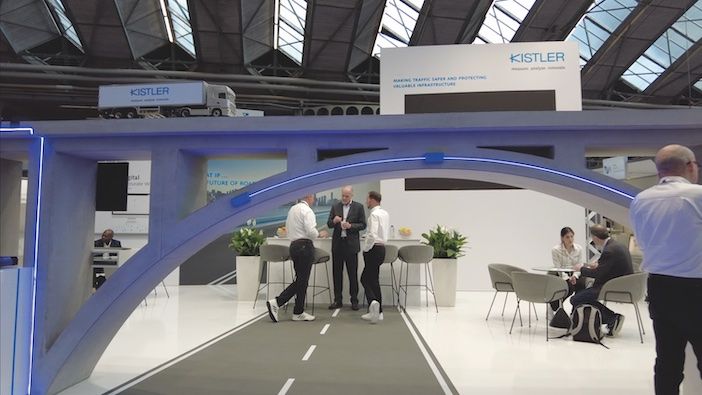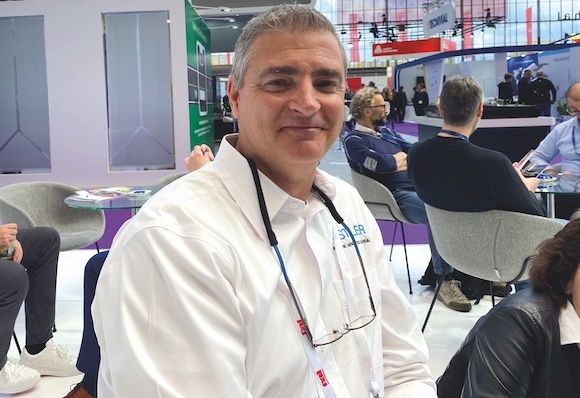The technology for direct enforcement with weigh-in-motion has been available for some time, but the legislation to enable it has proved problematic. Now, with new type approvals being granted in some European nations – and even a system to protect a bridge in New York City now operational – a new chapter is beginning, as Tom Stone discovers
For years, the use of weigh-in-motion (WIM) technology to directly enforce overweight truck violations was limited to just a handful of countries. But that landscape is slowly shifting as more jurisdictions explore adopting legislation and certification processes to allow this advanced weighing method for enforcement purposes.
Unlike static scales that require trucks to come to a complete stop, WIM systems can capture vehicle weight data as it is in motion. This offers advantages such as reduced traffic congestion and emissions. However, gaining approval to use WIM for direct enforcement has been an uphill battle.
“Direct enforcement is still growing and new things are happening. But I’d say we are still at the dawn of this era. From a manufacturer point of view, we are still waiting for more countries to proceed”
Christoph Klauser, WIM expert, Kistler
When TTi reported on this last year, the only countries anyone was speaking about in terms of type approval for WIM direct enforcement were Poland, Hungary, the Czech Republic (with a Cross Zlín system type-approved) and Brazil, where Intercomp is the vendor of choice. “The appeal of direct enforcement lies in its capability to operate automatically, 24/7,” says Leonardo Guerson, WIM application engineer for Intercomp. “These systems incur lower operational costs compared to traditional weigh stations, so it becomes feasible to establish more sites.”
Weigh-in-motion in New York
Recently more jurisdictions have begun their WIM, direct-enforcement journey. New European nations have issued type approvals, and to the surprise of many, given a reluctance in the US to embrace automated traffic enforcement of any kind, New York City DOT has recently pushed through new legislation.
This groundbreaking move was driven by the need protect a key, elevated 1.4 mile (2.4km) stretch of the 70-year-old Brooklyn Queens Expressway (BQE). In doing so New York has become the first US city to implement high-speed WIM direct enforcement.

New York’s direct enforcement was spurred by alarming data captured when WIM was first installed on the BQE for monitoring purposes. “It showed more than one overloaded truck per minute was crossing that bridge. And many were not just barely overloaded – they were terribly overloaded,” says JT Kirkpatrick, sales manager for Kistler in North America. “Tanvi Pandya of the New York City DOT did an outstanding job pushing her team pulling all the strings to make this happen.”
“Working with our industry partners is critical to develop state-of-the-art solutions that contribute to the success of NYC DOT,” said Tanvi Pandya, executive director, BQE Design Build & Emergency Contracts, NYC DOT, speaking of the project.
Launched in November 2023, the initiative stems from a July 2023 bill signed by New York Governor Kathy Hochul that authorized WIM direct enforcement on city-owned portions of the BQE. Prior to this, static weigh stations were the only approved method for ticketing overloaded trucks in the US. But in NYC space is at a premium. “There’s not much room, especially around this long bridge to pull a semi-truck over to do an inspection and weigh them on a static scale,” says Kirkpatrick.
To launch the pilot, NYC DOT worked with the NY State Department of Agriculture on an agreement and created testing requirements aligned with international standards. It also began the process of updating National Institute of Standards and Technology (NIST) regulations to include these testing procedures. “To create uniform, national standards we urge all state directors of agriculture for their support in updating of NIST Handbook 44 to include WIM direct enforcement,” says an NYC DOT spokesperson.
Once the legislation was passed, to ease the industry into enforcement, the city implemented a 90-day period after the WIM sensors went live, in which no fines were issued, only warnings. The mere threat of impending tickets proved very effective.
“Over the three-month warning period, overweight truck numbers reduced by 55%. The DOT is not issuing as many fines as expected, which is good because it’s not about collecting money but about safety”
JT Kirkpatrick, sales manager, Kistler, North America
While US adoption has faced resistance from truckers averse to fines, Kirkpatrick believes such systems will ultimately prevail: “The DOTs are after the gross offenders. Normally, the trucking industry is not opposed to fining the gross offenders because it sheds bad light on the whole industry.”
With WIM enforcement now a reality in New York City, the prospects of it spreading are now being discussed. “Initial findings are promising, but it’s still too early to determine definitive results,” says an NYC DOT spokesperson. “We will be monitoring freight behavior over a longer period to accurately track trends, while also sharing our experience with sister agencies in New York. We believe our work and updated NIST regulations can pave the way for other jurisdictions interested in launching similar programs.”
“As the nation’s leader in automated enforcement of overweight trucks, we strongly encourage the establishment of national standards for testing this technology,” says NYC DOT commissioner Ydanis Rodriguez. “Overweight trucks cause wear and tear that requires costly maintenance. Agencies across the country should have easier access to this critical tool to protect their roadways and bridges.”
Kistler is now working with other states on legislation to allow WIM direct enforcement. And on a national scale, steps are also underway to codify standards through the US National Conference on Weights and Measures (NCWM), to which Kistler is giving some impartial input. “This sets out the calibration process and frequency for a WIM site to be qualified by states, who must then still pass enabling legislation,” says Klauser.
Weigh-in-motion in Europe
Similarly in Europe, granting type approval is just the first step. Each WIM site must then undergo individual certification, re-validation, and procedures to ensure outlier weight readings are not used for enforcement actions that could be challenged in court. Updates for broader international standards like OIML R134 are also still being wrestled with, which will help inform universal adoption, but are unlikely to be adopted wholesale. “What actually happens is everyone takes this and has their own tweaks or ideas on how they could change and do it a little better,” says Klauser.
For example, in Switzerland, despite OIML certification, legal uncertainties remain around if and how police can use WIM for issuing fines. Meanwhile Germany’s PTB metrology institute has proposed a different interpretation of OIML R134 requirements.
“At the moment, it looks like everyone finds their own way,” says Klauser. “In the Czech Republic and Hungary, they looked at existing standards, considered them reasonable, mixed in their own ideas, and that became the national legislation.”

Belgium, France and Austria also now have type approval in place, though with no one system fully certified for use. “There is a tender in France, which has the goal for the two winners to get certified according to a standard,” says Klauser
The city of Bologna in Italy has deployed with a vendor using Kistler sensors for direct enforcement, though there is no nationwide legalization yet. “It’s a step-by-step learning approach by national authorities,” says Klauser. “Looking at this technology, knowing that you need to do the homologation differently than the static scale.”
Understandably, legal metrology offices are proceeding cautiously given the high stakes. As Klauser says, “If a judge says the technology you deployed is not reliable, it would reverse a case for someone who has invested a lot of money, so they are really reluctant. No one wants to see a judge saying the trucker was right, he was not overloaded, and the device was wrong because the type approval was not well done. That’s the big risk.”
Nevertheless, Klauser sees the progress as positive momentum: “It’s great to see that some are innovative, willing to go there and do it step by step.”

A bright future
Looking ahead, the impacts of robust WIM enforcement could extend well beyond simply protecting bridge infrastructure. When combined with AI-powered video analytics and data sharing between jurisdictions, Kirkpatrick envisions a capability to track severely overweight vehicles’ movements across entire transportation networks.
“With more data from various locations, we can gain deeper insights into how heavy traffic moves across states,” he said. “AI makes it possible to aggregate and analyze large amounts of data for data-based traffic management that could keep roads, highways, bridges, and everybody using them safe.”
As the world’s transportation infrastructure shows increasingly worrying signs of deterioration, the sensible application of technologies like WIM for overweight enforcement could provide a badly needed solution – if standards and processes can align.
This is an edited version of the full article that was first published in the June 2024 edition of TTi magazine.







